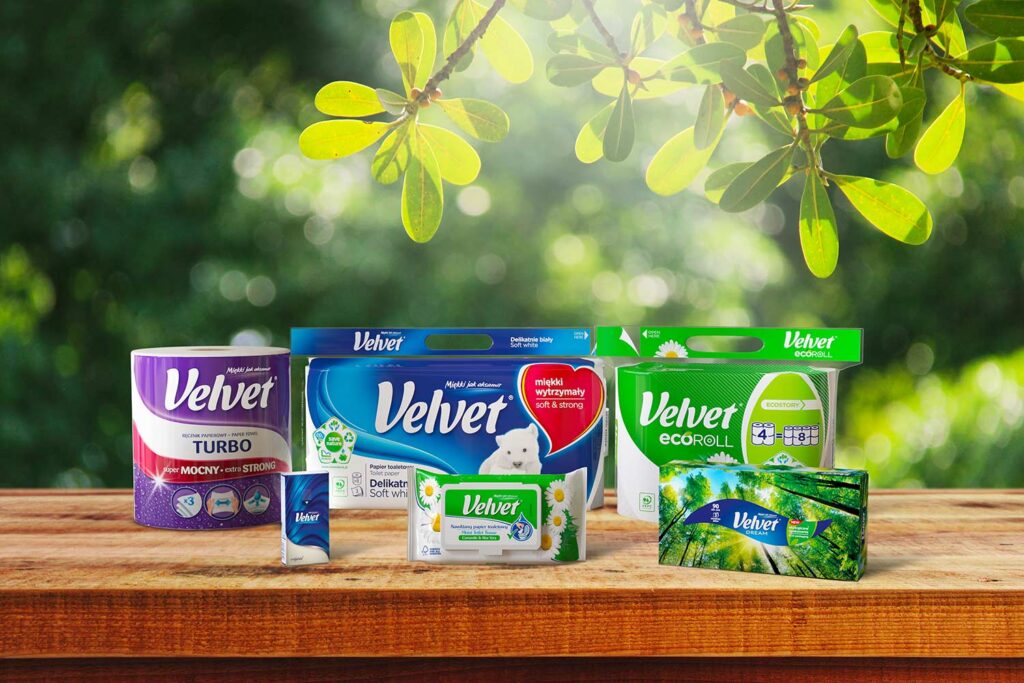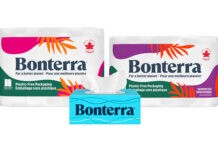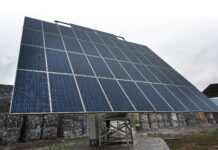Velvet Care has achieved a series of firsts in production capacity, workforce levels, turnover, quality and its Eco Agenda 2025. Wanda Ciesielczuk, Production and Technical Director, talks to TWM Senior Editor Helen Morris.
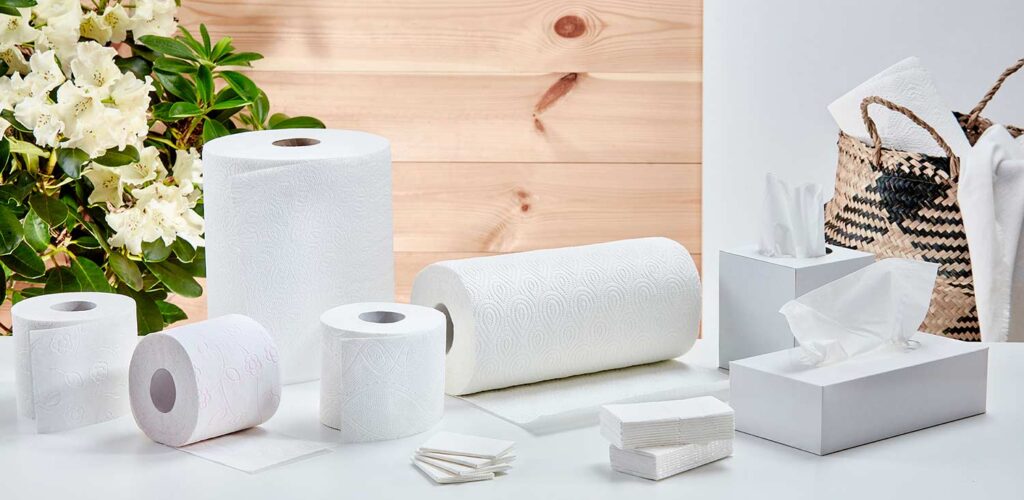
Polish branded tissue market leader Velvet Care – operating from a site of industrial production that started in 1897 – has “development written into its DNA”, Production and Technical Director Wanda Ciesielczuk tells TWM from the company’s Klucze-based tissue plant. “We’ve just started up TM8 at the end of 2021, as well as balancing the converting and manufacturing capacity,” she says. “In 2022, organic grow will continue in the converting area, and in the second half of 2022 we will be busy starting up new lines for rolled and folded products.”
All lines, Ciesielczuk adds, are “state of the art technologies” that mean the business can continue to introduce new product features and “really eco products” into the market. “Automatisation is also one of the key elements that we are looking for in all new investments as it allows us be more effective and cost competitive,” she explains.
This continuous investment and expansion are reflective of the company’s ever-evolving 125 historic years of production. TWM first visited the company in Klucze, located an hour’s drive north-west from Kraków, in 2019, and was warmly greeted by Ciesielczuk – who oversees production across the whole mill – as well as Plant Manager Marek Ściążko (who has now retired), and Vice President and Finance Director Rafał Curyło. At that time, Ciesielczuk had recently overseen the start-up of the company’s 5.56m Valmet-supplied TM in March 2018, and now latterly the start-up of TM8, the site’s second Valmet-supplied Advantage DCT line which started up on 18 December 2021.
The impressive 40+ hectare Klucze site was established in 1897 while tissue production started-up in 1976 and the business Velvet Care establishment in 2013. During our 2019 interview, the colleagues discussed how the business has a long history of firsts: doubling its workforce in five years, tripling production capacity, more than doubling converting capacity and increasing turnover from €121m to €150m in a year.
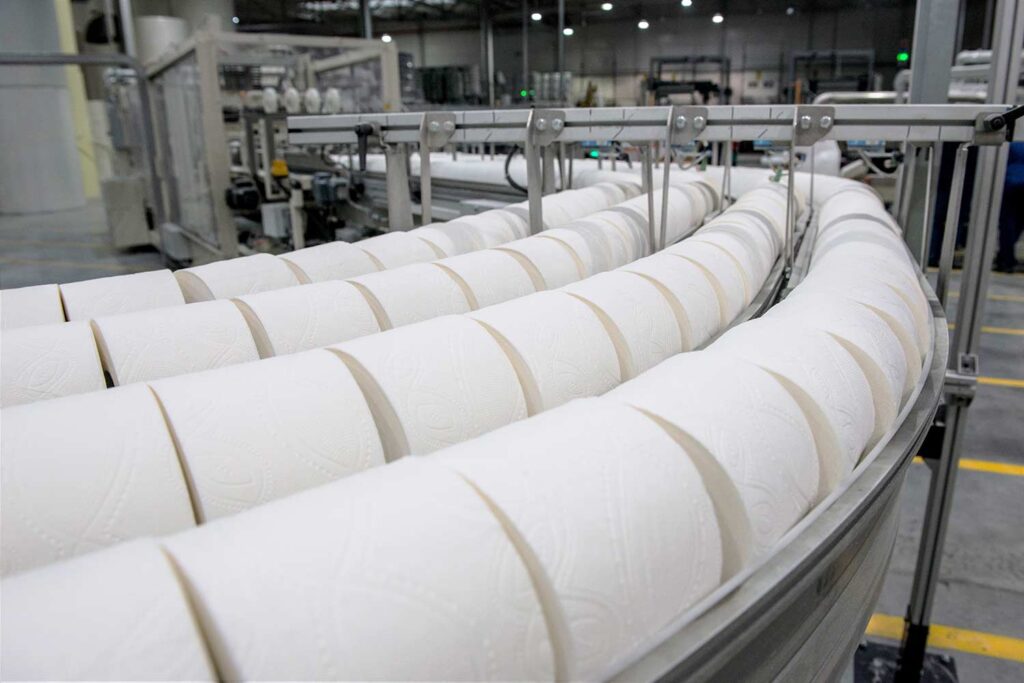
Annual growth figures in 2019 were at 20%. In 1997, it also became the first company to introduce high-quality tissue products to the Polish people with the launch of its Velvet brand. And still in 2022 it is the “indisputable leader” in the Polish tissue market.
Now in June 2022, the company is celebrating another milestone with the start-up of TM8, the plant’s second Valmet-supplied Advantage DCT line. The machine adds more than 60% production capacity meaning the company now produces 150,000tpy and has a converting capacity of 145,000tpy, producing high-quality tissue at an operating speed of 2,200m/min.
Ciesielczuk discusses the “tenderness and pride” she feels following its start-up, adding that it is the result of over two years of hard work: “It was a great challenge, realised in difficult times of the pandemic, but ended in a spectacular success. We now have another modern tissue machine in Klucze.”
The investment was dictated by the organic growth and acquisition that occurred in 2020: Velvet Care purchased Moracell, a family-owned manufacturer of products for personal and household hygiene business headquartered in Žabčice in the Czech Republic. At the same time in Klucze, in response to increases in demand for tissue products the company started-up new converting lines and established its finished goods as FSC, PEFC, ISO, BRC, IFS-certified.
“The tissue quality is the key element,” she says. “Based on that, the decision of a second tissue machine was obvious. Velvet Care has a good cooperation with financial institutions based on the first TM project from 2018 which was delivered on time and in budget.
“This made the investment decision easier. While the tender process was open for all tissue machine suppliers, Velvet Care’s technical requirements – especially for quality, productivity and water, gas, electrical energy consumption – were high. Valmet met all the requirements based on that and TM8 was started-up on 18 December 2021.”
It is the second Valmet tissue machine installed, and Ciesielczuk says that while the type of machine and stock preparation is similar, the company introduced some small modifications based on the TM7’s operation learnings that allowed it to start the machine smoothly and improve the productivity. “The installation went by the book, and the intermediate tests were completed only two weeks after the first roll were winded.”
The company is now present in the AfH, At-Home/consumer and private label markets and Ciesielczuk says the business has “vast development plans”: “We are definitely the strongest in the consumer market, we certainly feel like an expert there.
“Velvet Care is the owner and producer of Velvet branded products – the number one hygienic paper products producer in Central and Eastern Europe, and also one of the leading private label producers in the region. Therefore, we have a stable position in the consumer market and have developed solid foundations for further business growth there.
“The Velvet brand has been in business for a quarter of a century. We entered the market in 1997 and for 25 years we have put great care into providing soft, hygienic and convenient products for nearly every household in Poland. In responding to day-to-day needs in the modern world, over time, we have developed environmentally-conscious efforts that became the key indicator of Velvet’s future – all implemented and fine-tuned in line with the principle – we act today with tomorrow in mind!”
The AfH business is the company’s “youngest child”, she adds, “so our development pace in this category is the most dynamic”. More generally, when it comes to tissue trends, she adds that at the moment the market is “going through a big change”: “The macroeconomic situation in the world and in the region strongly influences paper categories. First of all, rising production and transport service costs force shelf price increases, and often these are the first significant rises in the last few years.
Additionally, the shortage of raw materials – mainly cellulose – is also causing a shortage of goods on store shelves. Both of these factors influence change in consumer behaviour, but it is still hard to say which of these trends are permanent. Lastly, there are still some changes in the market caused by recovering from the pandemic situation.”
Following the impact of Covid-19 on the AfH market, the projections for its recovery are promising: “AfH is one of the strategic pillars of our business,” she says. “Despite some turbulences on the whole market caused by Covid-19 we are still growing our AfH sales. Now, in the period of category recovery after the pandemic slowdown, we are even speeding up and outpacing other businesses.”
After analysing consumer and market trends, Ciesielczuk says the company “strongly believes” that AfH will continue to represent a promising opportunity and it will further explore this segment. “We are putting all necessary priorities and investments behind that segment,” she adds.
As for the Polish tissue market at large, the dynamics of the entire category of paper hygiene are positive – currently about 5%. “This is largely caused by rising shelf prices. The sales volume is also growing, although the increase is not that big for the time being. Dynamic changes in the market environment and the recovery from the pandemic indisputably affect market trends. Some segments that were decreasing during the Covid period are now dynamically growing, such as tissues in boxes and hankerchiefs, while the paper towel category which had been gaining ground during the pandemic is now slowing down a little.”
Over the past few years the company has also seen a shift in sales to higher quality segments with more layers, bigger rolls, and a decline in economic products. This consumer trend still continues but the company expects that the current large price increases in the paper market may slow it down and temporarily cause bigger interest in more affordable, economic products.
A key growth opportunity remains the sustainable production of environmentally-friendly products. The company has created ‘Eco Agenda 2025’ – a map of the ambitions it has set for its organisation in the coming years.
The aim is to strive for more progress, but to achieve it in a responsible way with respect for the environment. “The first target is for all products launched to rely on eco-friendly technological solutions, packaging and raw materials,” Ciesielczuk says. “From the establishment of Velvet Care in 2013 until the end of 2019 we have reduced the amount of plastic used in our production processes by 17%. From the time of announcing our Eco Agenda at the start of 2020 until the end of 2022, we plan to reduce this amount by another 20%.
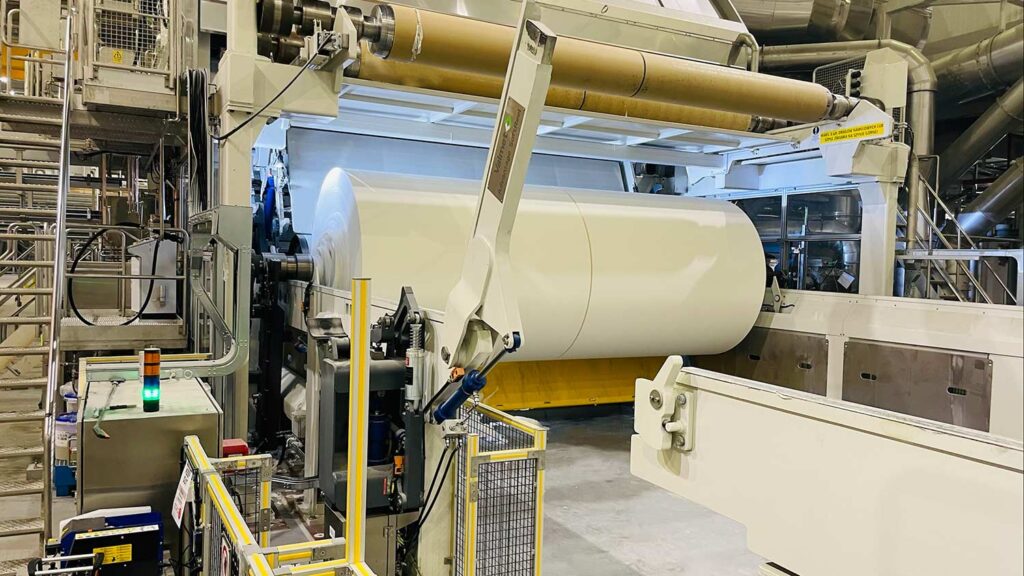
“Moreover, by 2022, Velvet Care will introduce plastic packaging with 30% recycled content. In the coming years, we will take further steps to reduce the amount of plastic used in our products and production processes.”
Environmental, Social, and Governance (ESG) criteria also play a role in the Velvet Care development strategy. Ciesielczuk says: “The company’s modernity and responsibility manifest itself not only in the measures used to achieve its goals or meet legal and formal requirements. Any business with a responsible approach to its mission should also bring wide-ranging benefits to all stakeholders, ensuring sustainable development for itself and the environment in which it is operates.”
The second pillar is organisation: “100% of the cellulose used in Velvet Care’s production processes come from fully renewable forest resources issued with internationally recognised certification. Our objectives are to significantly increase the plant’s energy effectiveness and reduce our water consumption. Already now, the water required for the production processes is used several times in an almost closed water circuit.
“Since 2013 we have reduced water consumption by over 40% and we continue in our efforts to limit this consumption further, while increasing the effectiveness of our water treatment processes.”
She adds that in the future, the business also plans to use renewable energy sources and the latest technologies for energy recovery from production processes: “Since 2013, the company has significantly reduced the emissions of harmful gases generated by the boiler plants in our factory.
“We have reduced SO2 emissions by 69%, NO2 emissions by 52% and CO2 emissions by 32%. We continue to improve the capacity of our machinery and simultaneously reduce greenhouse gas emissions.”
Last but not least, the third pillar of the Eco Agenda 2025 is inspiration, and Velvet Care aims to support making responsible purchases by inspiring change in the behaviour of buyers: “We strive to encourage consumers to rationally plan their shopping and to choose products and distribution channels that reduce the environmental impact of transport. We also commit ourselves to providing tools and products designed for facilitating rational shopping planning.”
After the pandemic, Ciesielczuk adds that she is still seeing an increase in gross sales of tissue and towel products locally. “We are definitely seeing that the tissue market in Poland is rebounding after the pandemic. Currently we observe an acceleration of its dynamics and are seeing a current growth rate on the level of above 15% year-on-year Moving Annual Total (MAT).
“However, the situation is the opposite when it comes to towels – this is a category that has grown tremendously during the pandemic, and it is now normalising and slowing down in pace. The paper towel category in Poland is currently experiencing rises of around 2% year-on-year MAT.
She adds that the results in both categories are “a direct derivative of the fact that consumer decisions, after a time of huge turmoil caused by Covid, are now returning to a more predictable path. Currently, the overall consumer market is mainly influenced by increases in shelf prices (resulting from extensive high prices of raw materials and services). This may result in greater interest in economic products and a decline in the pace of development of more expensive, premium segments.”
Despite the many fluctuations and changing dynamics, the company remains robust, and its key strategic principle of growth remains unchanged: “An important element of our company’s strategy is to maintain sustainable development and integration of environmental, social, and governance (ESG) with the overall company strategy,” she adds. “Recently, taking into consideration the many complex and challenging social and economic situations, we have placed even greater emphasis on further diversification, supply chain and cyber security. We will continue to concentrate on increasing the scale of our business, its profitability, suppliers, and diversification of revenue streams.”
